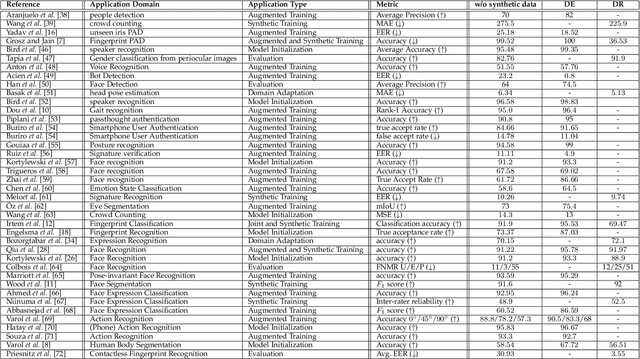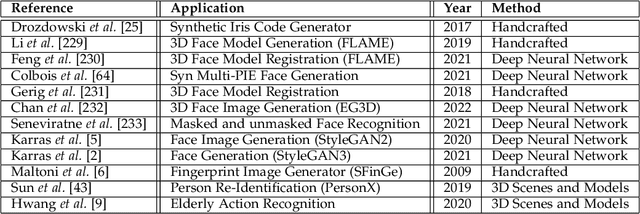Synthetic Data in Human Analysis: A Survey
Paper and Code
Aug 19, 2022



Deep neural networks have become prevalent in human analysis, boosting the performance of applications, such as biometric recognition, action recognition, as well as person re-identification. However, the performance of such networks scales with the available training data. In human analysis, the demand for large-scale datasets poses a severe challenge, as data collection is tedious, time-expensive, costly and must comply with data protection laws. Current research investigates the generation of \textit{synthetic data} as an efficient and privacy-ensuring alternative to collecting real data in the field. This survey introduces the basic definitions and methodologies, essential when generating and employing synthetic data for human analysis. We conduct a survey that summarises current state-of-the-art methods and the main benefits of using synthetic data. We also provide an overview of publicly available synthetic datasets and generation models. Finally, we discuss limitations, as well as open research problems in this field. This survey is intended for researchers and practitioners in the field of human analysis.
 Add to Chrome
Add to Chrome Add to Firefox
Add to Firefox Add to Edge
Add to Edge